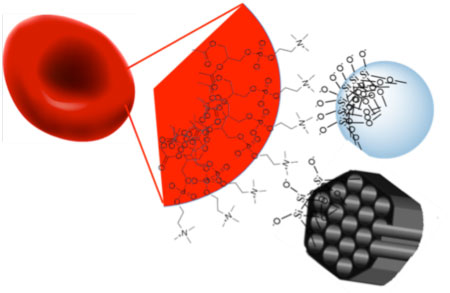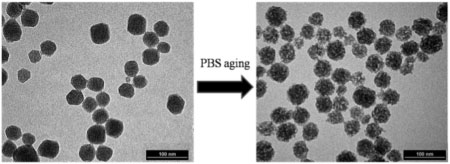|
04/30/2010

Impacts of
Mesoporous Silica Nanoparticle Size, Pore Ordering, and Pore Integrity
on Hemolytic Activity
Recent research from the research group of Professor Christy Haynes.
Recently,
the Haynes group has systematically studied the hemolytic activity of nonporous
and porous silica nanoparticles with varied sizes using a hemolysis assay.
The motivation for this work lies in the great potential of these nanoparticles
as drug delivery agents. The result shows that porous silica nanoparticles
have lower hemolytic activity than their similarly sized nonporous counterparts,
likely due to fewer silanol groups on the cell-contactable surface of the
porous silica nanoparticles. In
addition, the authors find the
extent of hemolysis by mesoporous silica nanoparticles increases as the
pore structure is compromised by mild aging in saline, initiating dissolution
of silica and leading to pore collapse (as shown in the TEM images below). This effect has never
before been investigated in silica nanotoxicity studies and has significant
implications for the future use of these materials. Furthermore, the porous
silica nanoparticle-induced hemolysis can be eliminated by modifying the
nanoparticle surface with a poly(ethylene glycol) coating during nanoparticle
synthesis.
This work was recently reported in the Journal of the American Chemical Society (Lin,
Y.-S.; Haynes, C. L. J. Am. Chem. Soc. 2010, 132, 4834-4842).

|